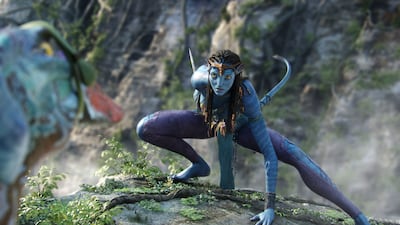
Cameron cites the film’s technological achievements as perhaps its most significant legacy.

Sam Worthington, left, as Jake Sully and Stephen Lang as Colonel Miles Quaritch in 'Avatar'. All photos: Twentieth Century Studios

'Avatar' remains the highest-grossing film in cinema history, having raked in almost $3 billion globally since its release.

Much of the technology used on the film director James Cameron created specifically for the project.

Michelle Rodriguez as Trudy Chacon.

The film picked up the 2010 Oscars for cinematography, visual effects and art direction.

'Avatar' has been extensively remastered and converted to 4K for its rerelease.

Cameron cites the film’s technological achievements as perhaps its most significant legacy.

Sam Worthington, left, as Jake Sully and Stephen Lang as Colonel Miles Quaritch in 'Avatar'. All photos: Twentieth Century Studios

'Avatar' remains the highest-grossing film in cinema history, having raked in almost $3 billion globally since its release.

Much of the technology used on the film director James Cameron created specifically for the project.

Michelle Rodriguez as Trudy Chacon.

The film picked up the 2010 Oscars for cinematography, visual effects and art direction.

'Avatar' has been extensively remastered and converted to 4K for its rerelease.

Cameron cites the film’s technological achievements as perhaps its most significant legacy.
James Cameron on 'Avatar: The Way of Water' and why 3D filmmaking isn't over
The director speaks about his use of the groundbreaking technology as the sequel is set to be released in December and the original hits screens again this month
Chris Newbould
14 September, 2022
- Listen In English
- Listen In Arabic